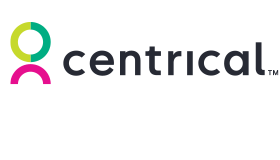Your frontline call centre agents are engaging with your customers constantly. Their performance is critical to your ongoing success, and therefore call centre quality monitoring should form a key part of your approach when it comes to achieving your business goals.
Read on to learn more about call centre quality monitoring, including implementation tips, best practices, and more.
What Is Call Centre Quality Monitoring?
In general, call centre quality monitoring is about keeping track of the inputs and outcomes from customer interactions with your call centre employees.
For example, you might have set a number of call centre KPIs such as Customer Satisfaction (CSAT) or First Call Resolution (FCR) metrics. By monitoring call quality, you can gauge why these metrics are not on track, or how to optimize and improve employee performance even further.
But it’s not just about outcomes. Input is important too, as they drive outcomes in the long run.
Are call centre agents’ conversations representative of the brand? Do they put the customer first? These inputs are often just as important as the key metrics you measure against, and call centre quality monitoring picks up these aspects of engagements, too.
Why Is Quality Monitoring Important for Call Centre Performance?
Call centre quality assurance call monitoring is incredibly important, as it sheds light on a critical aspect of a business that otherwise would be difficult to get a handle on.
As mentioned at the beginning, your call centre agents’ engagement with customers has an outsize impact on business performance.
94% of customers say that their decision of whether to buy from a company is influenced by how that company treats its customers.
McKinsey estimates that companies who effectively implement “customer value execution” (CVEx) can boost revenues by 10% to 20%, and reduce costs by 5% to 10%.
By engaging in call centre quality monitoring, you’re sending a message that you expect the highest standards from your employees; and that company leadership is here to coach, upskill, and lend the required assistance to contact centre teams to help them achieve their goals – for example, by providing the right software tools that can help them be more productive and effective.
Main Advantages of Call Quality Monitoring
There are many advantages to call quality monitoring. These include:
- Understanding where knowledge gaps may exist for current employees
- Confirming adherence to regulatory compliance
- Gaining better insight into customer pain points
- Experiencing your own call centre operations through the eyes of your customer
- Ensuring a consistently high standard of customer service
- Providing coaching to contact centre employees
- Increasing customer satisfaction
- Attaining your KPIs
- Identifying areas of opportunity, for example upselling or cross-selling opportunities
- Ensuring that all conversations are on brand, and are in line with the values of the company
- Rewarding contact centre employees who go the extra mile to delight customers
As you can see, there are massive advantages to call centre quality monitoring, with very little downside.
How to Implement Call Quality Monitoring in a Call Centre
Now that we’ve looked at how important call centre quality monitoring is, it’s crucial to be aware of the different methods available when it comes to implementing a call quality monitoring service in a call centre.
Assess What’s Important to You
Of course, top-level KPIs are critical – but when monitoring for quality, it’s important to have transparency in terms of what you’re looking for, so that both company leadership and call centre agents are on the same page regarding what’s expected of them. Points to have clarification on include:
- The tone expected from your employees
- What questions are being asked
- Is the customer being put first consistently?
- Understanding the brand values and communicating this to customers
- The expectation regarding following a script, if relevant
Communicate Your Call Monitoring Goals Effectively
It can be truly valuable to communicate with employees exactly why you’re engaging in call monitoring. You’re not “spying” on them – rather, you’re there to help them improve, to coach them, and to assist them in meeting their targets.
This approach, including the effective communication thereof, can go a long way to bringing employees into your corner and leading a team effort to obtain maximum results.
Choose the Right Monitoring Tools
The tools you choose can be one of the most critical decisions you make. One of the main reasons for this is that your tools send employees a message.
Are you looking to treat them like machines, with non-personal interactions – or are you valuing them, building them up with exciting and fun tools such as gamification?
Create a Robust Feedback Loop
The lessons learned during call quality monitoring should be shared with the agent in the best way possible. Not giving this feedback is doing everyone a disservice.
Monitor Some Calls in Real Time
It’s one thing to monitor calls after the fact – and certainly easier to pronounce a “verdict” on the call. However, it’s something else entirely knowing that you’re monitoring a call in real time. It increases empathy and puts you in the shoes of your agents as they field customer concerns.
Next, let’s have a look across the industry at call centre quality monitoring best practices.
Call Centre Quality Monitoring Best Practices
When it comes to call quality monitoring best practices, here are some helpful tips:
Provide Incentives
Rewarding the behaviors you seek to encourage is a great way of reinforcing those behaviors, and demonstrating what’s truly important to you.
Providing incentives and rewarding the desired behavior observed during call quality monitoring is a great way to do this. It could be something as simple as a shoutout in the all-hands meeting, or even a full rewards program.
Taking this a step further, by leveraging gamification, you can incentivize call centre agents with virtual coins, badges, leaderboards, unlocking new levels, and a whole lot more.
Ensure There Is Organizational Learning
Even in a feedback conversation with a specific agent or team, that knowledge is shared only between the people that are party to the conversation.
Call centre quality monitoring best practices include ensuring that this knowledge is available to others in the organization – either through a dedicated knowledge base, or distributed via gamified learning experiences.
Use Quality Assurance Monitoring to Engage and Motivate Employees
Sometimes call centre agents can feel like they are alone in the very tough world of dealing with customers who can be extremely frustrated.
By referencing cues from call monitoring, you can make employees feel that you are there with them on the frontlines and that their efforts are appreciated.
These call centre monitoring best practices can lead to the quicker achievement of your key business goals.
Solutions for Call Centre Quality Monitoring
From gamified goals to guided performance feedback, and from personalized microlearning to a full suite of recognition tools, a platform enables companies to:
- Amplify performance through nurturing agents and investing in their success, by providing guided performance improvement, actionable coaching, and performance-driven microlearning
- Enhance engagement by aligning individual goals with company goals, and providing rewards and recognition
- Drive cultural transformation by helping employees feel part of something bigger
- Boost time to proficiency with a 30% improvement when onboarding new agents
Final Thoughts
Call centre quality monitoring is an essential part of success – not only for your call centre specifically but your business as a whole. Here are a few key article takeaways:
- Call centre quality assurance is monitoring the interactions between customers and agents
- Quality assurance monitoring is incredibly valuable and offers a wide variety of benefits, including gaining insight into employee knowledge gaps and customer pain points, ensuring adherence to regulatory compliance, and much more
- When implementing call centre quality assurance monitoring, it helps to evaluate factors such as what you are looking for, how to effectively communicate goals, selecting the right quality assurance tools, and creating a feedback loop
- Be sure to engage employees by providing incentives and ensuring organizational learning
This blog post has been re-published by kind permission of Centrical – View the Original Article
For more information about Centrical - visit the Centrical Website
Call Centre Helper is not responsible for the content of these guest blog posts. The opinions expressed in this article are those of the author, and do not necessarily reflect those of Call Centre Helper.
Author: Centrical
Published On: 11th May 2023
Read more about - Guest Blogs, Centrical






 Centrical provides a real-time performance management, microlearning, gamification, coaching, and voice of the employee platform for frontline teams. The solution inspires and personally guides employee success and growth by making every moment actionable.
Centrical provides a real-time performance management, microlearning, gamification, coaching, and voice of the employee platform for frontline teams. The solution inspires and personally guides employee success and growth by making every moment actionable. 




























